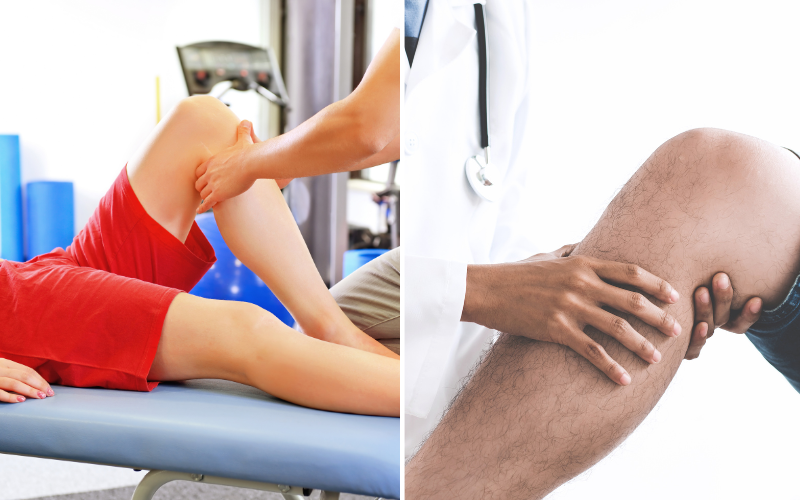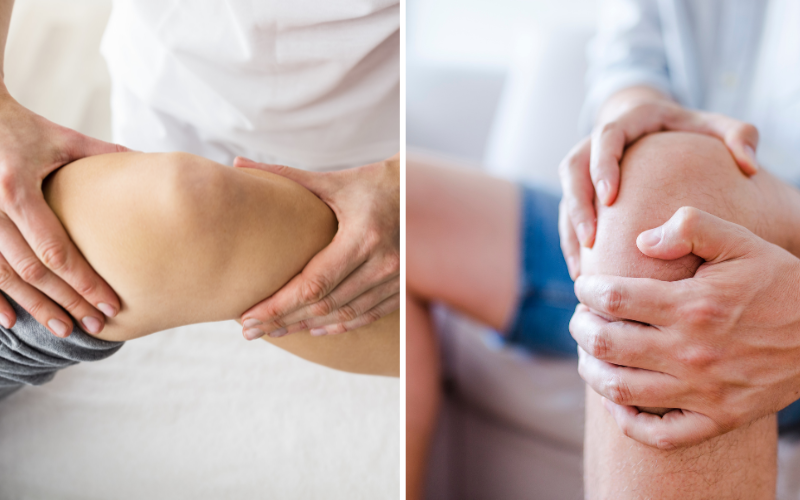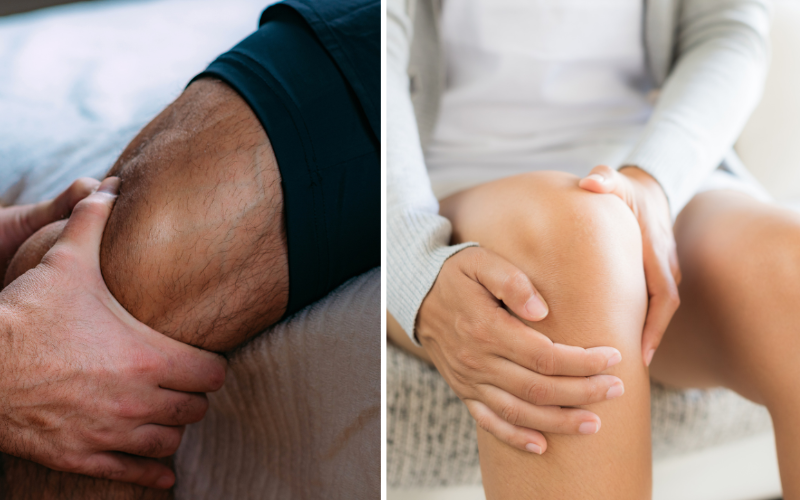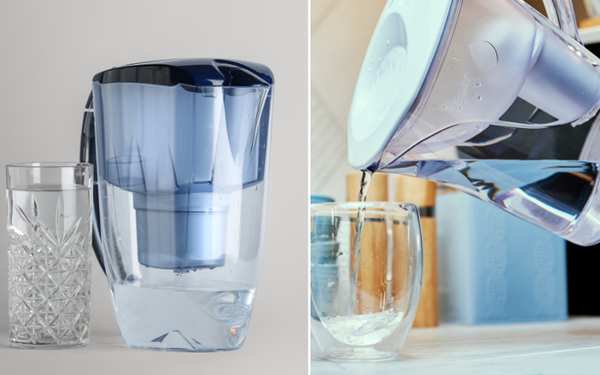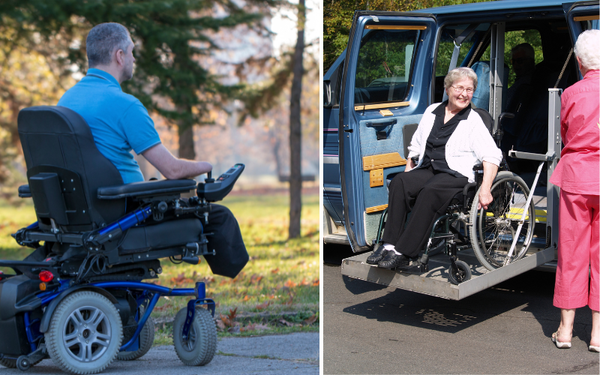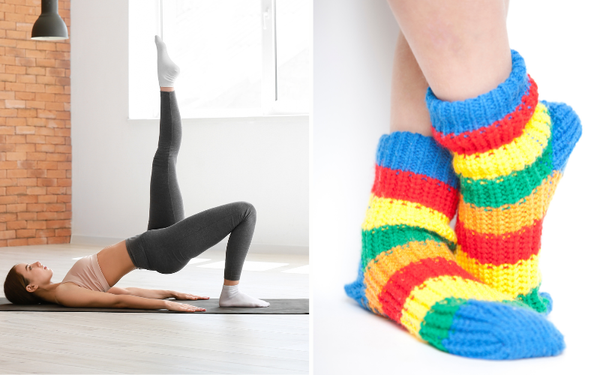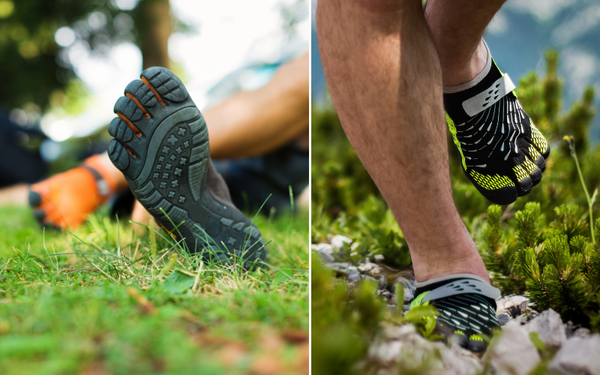Knee pain affects millions of people worldwide, impacting their quality of life and daily activities. Are you one of them, searching for an effective and non-invasive solution to relieve your discomfort? Discover the power of heat and vibration therapy, innovative treatments that can potentially alleviate your knee pain and help you regain mobility. But, does heat and vibration help knee pain? Let’s explore this further.
Key Takeaways
- Understanding the causes and symptoms of knee pain is essential for effective treatment.
- Heat therapy, combined with physical therapy and other methods of heat application, can reduce knee pain intensity while also increasing muscle strength.
- Vibration Therapy has been shown to stimulate muscles, improve joint function and circulation as well as providing relief from chronic pain when used correctly in combination with heat therapies.
Understanding Knee Pain: Causes and Symptoms

Knee pain can stem from various factors, including knee osteoarthritis (OA), one of the most common causes of painful joints. This degenerative, noninfectious condition of the knee joint affects millions of people, impacting their daily lives and physical capabilities.
Other causes range from sports injuries to overuse, putting stress on the joint and surrounding muscles. Symptoms of knee pain may differ depending on the underlying cause, but they generally include discomfort, stiffness, swelling, and limited range of motion. Pain signals can also be a helpful indicator of the severity of the issue.
For those with knee OA, mornings may be particularly challenging, with stiffness gradually subsiding as the day progresses. Understanding the causes and symptoms of knee pain paves the way for identifying effective treatment options, ultimately leading to an active, pain-free life.
The Science Behind Heat Therapy for Knee Pain

Heat therapy has long been used to alleviate knee pain by promoting muscle relaxation, improving circulation, and reducing inflammation. Research indicates that combining continuous low-level heat with traditional physical therapy significantly enhances pain reduction and restores strength and movement in individuals with chronic knee pain.
Various methods of heat application exist, including dry heat sources such as heating pads and moist heat sources like warm towels or hot showers. Additionally, massage therapy can effectively loosen stiff joints and muscles, increase flexibility, and provide relief from knee pain.
Benefits of Heat Therapy
Heat therapy offers numerous advantages for those suffering from knee pain. In addition to providing pain relief, it:
- Increases flexibility
- Reduces muscle stiffness
- Can reduce pain and disability in patients with knee osteoarthritis
- Improves physical function, pain management, and overall quality of life
The benefits of heat therapy extend beyond simple pain relief, making it a valuable tool in the fight against knee pain.
How to Apply Heat Therapy
Proper application of heat therapy is key to maximizing its benefits, including improved blood flow. This involves choosing the right heat source, duration, and frequency. For example, hot water bottles are typically used for 20 to 30 minutes, while heat patches can remain in place for up to 8 hours.
The frequency of heat therapy depends on the severity of the knee pain, but generally, it is recommended to apply heat 2-3 times per day. As always, consult with a healthcare professional before starting any new treatment, including heat therapy.
The Science Behind Vibration Therapy for Knee Pain

Vibration therapy is gaining popularity as a novel treatment of knee pain. This type of therapy uses vibration to promote healing in the affected area. It utilizes a body vibration plate, which produces high-frequency, low-amplitude vibrations to stimulate muscles and joints. Studies have shown that whole body vibration can reduce knee pain intensity in individuals with chronic knee osteoarthritis, making it a viable treatment option.
Vibration therapy offers multiple benefits for knee osteoarthritis, including:
- Stimulating muscle tissue
- Improving ligament function
- Facilitating blood circulation
- Increasing joint strength
- Reducing inflammation
- Alleviating pain
By addressing these various factors, vibration therapy can effectively combat knee pain and improve overall joint health.
Benefits of Vibration Therapy
Vibration therapy, also known as vibration exercise, offers a range of benefits for those experiencing knee pain. In addition to reducing pain intensity, it can increase muscle strength and improve dynamic balance performance.
By stimulating muscle tissue and enhancing ligament function, vibration therapy can contribute to overall joint health and stability, making it an effective treatment option for knee pain.
How to Use Vibration Therapy
Selection of a suitable device, intensity, and duration, tailored to individual needs, is key to achieving the best results from whole body vibration training. The recommended frequency and duration for an eight week vibration therapy program are 15-20 minutes, 3-5 days a week.
Positive outcomes have been recorded in clinical trials that focused on patients with knee osteoarthritis. Even after a short three-month intervention, these patients were found to have seen significant improvement. As with heat therapy, always consult with a healthcare professional before starting vibration therapy to ensure it’s suitable for your specific needs.
Combining Heat and Vibration Therapy for Optimal Results

Combining heat and vibration therapy can provide optimal results for knee pain relief and improved functionality. Devices that offer both heat and vibration therapy, such as heated knee massagers and knee brace wraps, capitalize on the benefits of both treatments to effectively target knee pain. By addressing inflammation and stiffness through heat therapy and stimulating muscles and improving circulation with vibration therapy, these devices can offer a comprehensive approach to knee pain management.
Beyond their individual benefits, heat and vibration therapy can work in synergy to boost the effectiveness of treatment. For instance, heat therapy can help reduce inflammation in the joint, while vibration therapy stimulates muscles and enhances circulation, promoting healing and further reducing inflammation. By utilizing these treatments in conjunction, individuals suffering from knee pain may experience greater relief and improved overall joint health.
Heated Vibration Devices for Knee Pain Relief
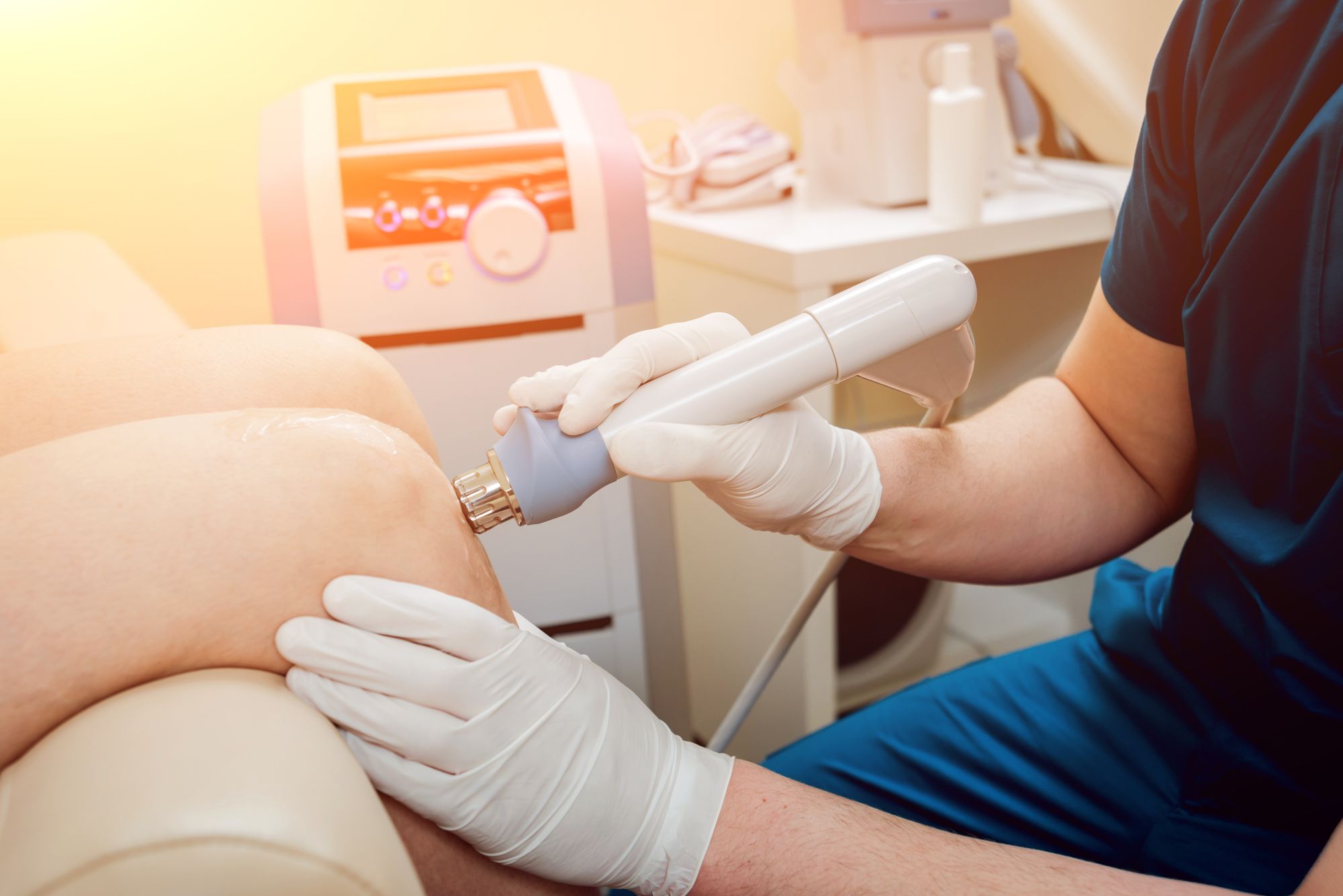
Heated vibration devices, such as heated knee massagers, offer a convenient and effective way to apply both heat and vibration therapy for knee pain relief. These devices combine the advantages of heat therapy, including reduced inflammation and stiffness, with the benefits of vibration therapy, such as muscle relaxation and improved circulation.
Not only are heated knee massagers convenient, but they are also cost-effective, providing both therapies simultaneously without the need for multiple treatments or devices. By investing in a heated vibration device, individuals with knee pain can experience the combined benefits of heat and vibration therapy in one easy-to-use solution, potentially leading to significant pain relief and improved quality of life.
Precautions and Safety Tips When Using Heat and Vibration Therapy
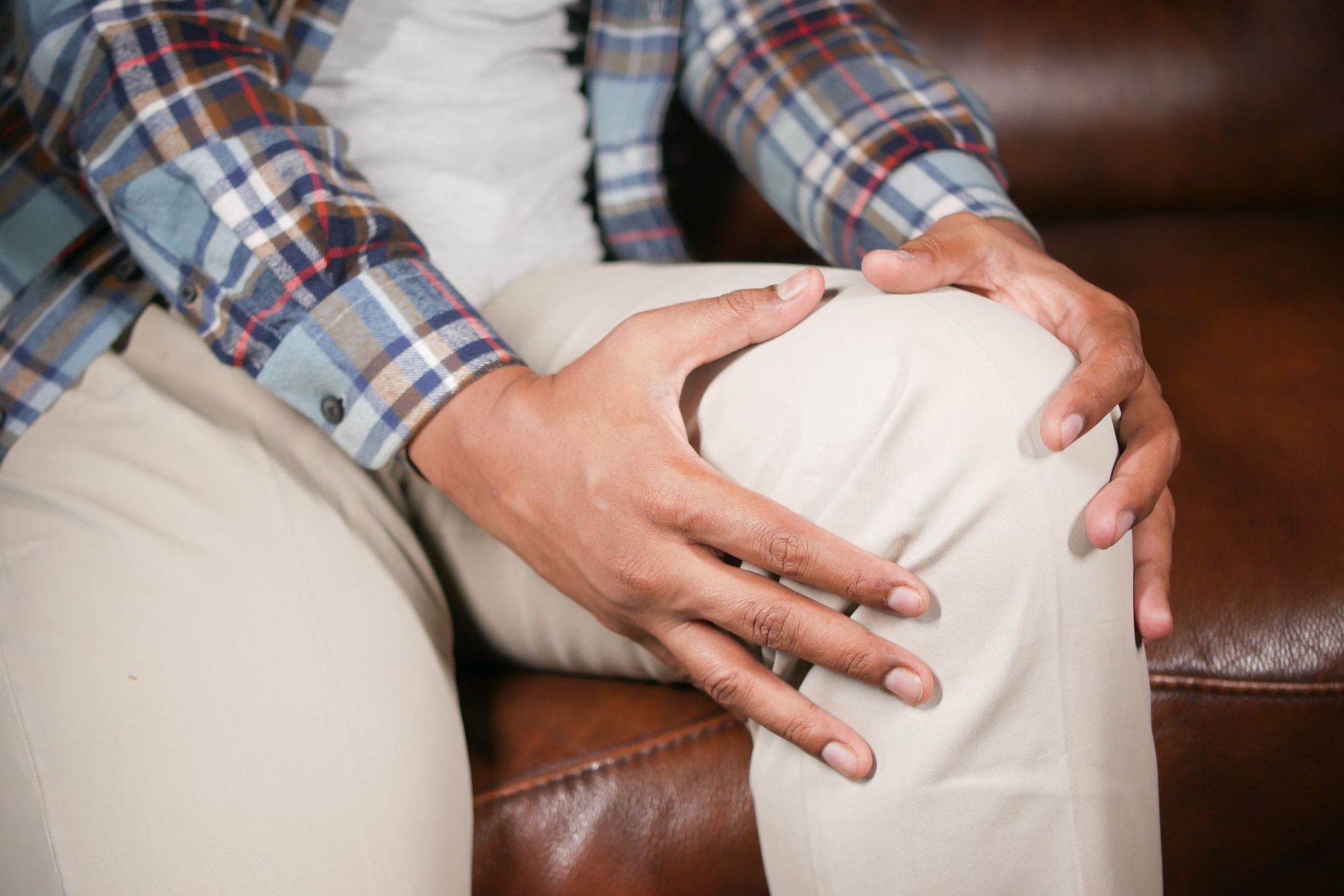
Following safety precautions and guidelines when using heat and vibration therapy is pivotal to mitigate potential risks and complications. Here are some important safety tips to keep in mind:
- For heat therapy, avoid using it for extended periods to prevent burns and refrain from applying heat while sleeping.
- When using vibration therapy, avoid using it on the abdomen or over red, raw, or inflamed skin.
- Consult a healthcare professional if undergoing radiation therapy.
Before initiating any new therapy or treatment for knee pain, including heat and vibration therapy, consultation with a healthcare professional is always recommended. By following the appropriate safety precautions and guidelines, individuals can ensure they are using these treatments safely and effectively, maximizing their potential benefits while minimizing any risks.

Alternative Treatments for Knee Pain
Physical therapy, medications, and lifestyle modifications are among the alternative treatments available for knee pain, alongside heat and vibration therapy.
Physical therapy is a form of treatment that utilizes exercises and other techniques to improve mobility, reduce pain, and restore function, ultimately improving physical functions. Medications, such as non-steroidal anti-inflammatory drugs (NSAIDs), corticosteroids, and opioids, can also be employed to treat knee pain and support the improvement of physical functions.
Lifestyle modifications, such as weight loss, regular exercise, and abstaining from activities that place undue stress on the knee, can be beneficial in reducing knee pain and improving overall joint health. These alternative treatments can be used in conjunction with heat and vibration therapy to create a comprehensive treatment plan tailored to an individual’s specific needs and goals, ultimately leading to decreased pain.
Success Stories: Real-Life Experiences with Heat and Vibration Therapy

Success stories from individuals who have experienced significant knee pain relief and improved quality of life through heat and vibration therapy highlight the potential benefits of these treatments. One individual reported that, following the use of a knee massager with heat and vibration therapy, they experienced a considerable decrease in pain and an enhancement in mobility. Another individual reported that the therapy enabled them to regain strength in their knee and improved their overall quality of life.
These real-life experiences demonstrate the potential of heat and vibration therapy as effective treatments for knee pain. Patients have reported diminished pain intensity, increased muscle strength, enhanced dynamic balance, and respite from chronic pain. Some individuals have discovered relief through knee massagers that deliver calming heat and consistent vibrative pulses, providing an accessible and convenient solution for knee pain management.
In conclusion, heat and vibration therapy have exhibited promising outcomes in managing knee pain. By incorporating these treatments into a comprehensive pain management plan, individuals suffering from knee pain may experience significant relief and an improved quality of life.
Summary
Throughout this comprehensive guide, we have explored the potential benefits of heat and vibration therapy for knee pain relief. Individually, these treatments offer numerous advantages such as pain reduction, improved flexibility, and increased muscle strength. When used in combination, they can provide optimal results for knee pain management and improved functionality.
As we have seen through real-life success stories, heat and vibration therapy can significantly alleviate knee pain and enhance quality of life. By considering these treatments, along with alternative options such as physical therapy, medications, and lifestyle modifications, individuals suffering from knee pain can develop a comprehensive plan tailored to their specific needs and goals, ultimately regaining an active, pain-free life.
Frequently Asked Questions
Is vibration good for knee pain?
Vibration can provide significant benefits for those suffering from knee pain, as studies suggest it can improve strength and function in patients with osteoarthritis and may even slow disease progression.
What is the fastest way to relieve knee pain?
To quickly relieve knee pain, use the RICE method of rest, ice, compression and elevation. Additionally, reduce sitting with your knees bent, don't sit cross-legged, wear supportive footwear, sleep with a pillow between your knees and drink enough water to keep your muscles strong and flexible. Furthermore, consider weight management when necessary.
What is better for knee pain heat or cold?
For knee pain, it is best to use ice for the first 72 hours if there is swelling, then switch to heat once the swelling has gone down. Heat helps loosen tight muscles and joints and relieves pain and muscle spasms. Cold is beneficial for acute pain and inflammation in the joint.
How long should I use heat therapy for knee pain?
For knee pain, you should use heat therapy for 20 to 30 minutes if using a hot water bottle, or up to 8 hours if using a heat patch.
What precautions should I take when using heat and vibration therapy for knee pain?
Be sure to follow safety guidelines such as avoiding extended heat therapy sessions, refraining from using heat therapy while sleeping, and consulting a healthcare professional before starting any new treatment to ensure the safe use of heat and vibration therapy for knee pain.
You Might Also Like...
